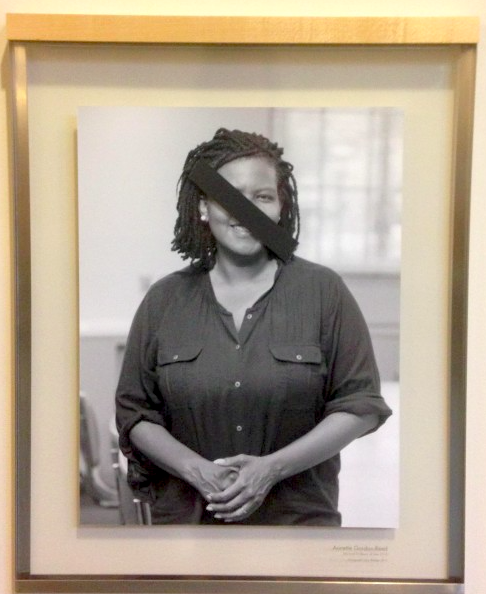In thinking about the current battle between the Trump administration and Harvard University, fought over anti-Semitism and DEI, I recalled an earlier controversy in which Harvard–specifically, its law school–pled guilty to racism. I wrote about it here and elsewhere.
In 2015, Harvard Law School was roiled by a supposed incident of racism, in which someone placed black tape over the portraits of some of the school’s black professors. Like this:
The crime, such as it was, was never solved, which I assume means that, like nearly all instances of campus racism, it was an inside job. When it became clear that no progress was being made, I wrote the dean of the law school an email suggesting some investigatory tips. For example, the portraits were covered with glass which in all likelihood bore fingerprints. The dean did not respond to my email, nor, as far as I could tell, was the “crime” looked into any further.
That incident gave rise to some soul-searching the part of the law school’s dean, Martha Minow. Quoting myself, at the link above:
The Dean of the law school, Martha Minow, said that racism is a “serious problem” there. Really? Minow has been the Dean since 2009. Why has she allowed racism to flourish? Where has this “serious problem” been manifested, and what has she done about it? Who, exactly, are the “racists” who have created this serious problem?
I expressed skepticism as to Dean Minow’s sincerity. She certainly didn’t think that she, or anyone on the Harvard Law School staff, was a racist. So why would racism be a “serious problem” at the law school? Through the magic of “systemic racism,” racism without racists.
This is what we still see today. Harvard thinks it has a duty to combat racism. But why? Are there a lot of racists on Harvard’s faculty, or in its administration? If so, they should be fired. But of course, that isn’t what they mean. It is “systemic racism”–racism in the air–that they are combatting through their superior virtue. This is why Harvard and so many other institutions have engaged for many years in affirmative action, DEI, in other words, race discrimination. They do it to reverse the effects of “systemic”–i.e., non-existent–racism. Discriminatory policies on Harvard’s part are a sign of virtue.
Universities like Harvard are caught in a Catch-22. In order to receive federal funds, they are required to certify, every year, that they do not engage in any form of race, etc., discrimination that is illegal under federal law. But of course they do, as the Supreme Court has specifically held. They discriminate, typically, against whites and Asians, and often against men.
They think this discrimination is virtuous because they are fighting against what Dean Minow called the “serious problem” of racism in their institutions. But of course, they don’t really mean it. They are combatting “systemic racism” in our society at large, which they believe is pretty much everyone’s fault except theirs.
But they can’t say these things out loud. So they virtuously discriminate, while certifying, falsely, that they do not. As argued here, that could be the weakness that brings the whole academic edifice of discrimination crashing down.

















